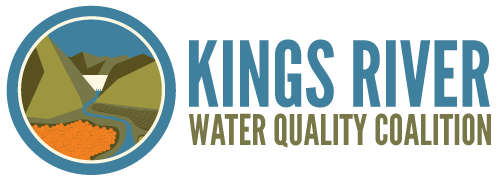Irrigation & Nitrogen Management Plan (INMP)
The Irrigation and Nitrogen Management Plan (INMP) is a core requirement of the Irrigated Lands Regulatory Program (ILRP). It serves as a farm-level planning and reporting tool to help growers prepare for the upcoming crop season and evaluate their agricultural practices.
The INMP Worksheet and Summary Report aim to improve irrigation and nitrogen use efficiency, while tracking the amount of nitrogen applied and removed through crop harvest.
The Total Nitrogen Applied and Harvested Crop Yield values submitted on the Summary Report are used, together with standardized estimates for nitrogen removal by crop yield, to evaluate nitrogen use efficiency.
Worksheet (Plan)
The INMP Worksheet is a planning tool completed before each crop season for each parcel—or group of parcels farmed as a single field—referred to as a management unit (MU).
The Worksheet assists growers with efficient planning of irrigation and nitrogen use by accounting for nitrogen already available (e.g., soil or irrigation well water) before applying additional synthetic fertilizers.
Worksheets must be kept on-farm and made available upon request during inspections by the Central Valley Regional Water Quality Control Board (Regional Board).
Regulatory Date:
- Pre-Season Planning: Complete planning sections and certify by March 1, annually.
Summary Report
This report is prepared after the crop season with information from the “Actual” column (B) of the INMP Worksheet. It is a summary of what actually took place during the crop season.
INMP Worksheet boxes marked with an asterisk (*) are transferred to the Summary Report through the KRWQC Member Portal.
Regulatory Date:
- Due to Coalition by March 1, annually.
🛑 Requirement for INMP Worksheet Certification
The INMP is required for all growers, except for fields that are irrigated pasture with no external nitrogen inputs,
However, the certification of the Worksheet is required only if the parcel is located in a High Vulnerability Area (HVA) to groundwater or identified as an “Outlier” on the Nitrogen Use Evaluation.
If no nitrogen is applied, certification is not required, but growers must still indicate this on the INMP.
Certification options include:
-
-
-
- Grower Self-Certification, contingent on completion of a coalition-approved training program,
Or; - Certification by an INMP Specialist, as defined in the General Order.
- Grower Self-Certification, contingent on completion of a coalition-approved training program,
-
-
🎓 Grower Self-Certification
The California Department of Food and Agriculture (CDFA) offers a self-paced online training program enabling growers to self-certify Irrigation and Nitrogen Management Plan (INMP) Worksheets for their operation(s), as required under the Irrigated Lands Regulatory Program (ILRP).
📋 Program Overview
- Training Duration: Approximately 4–6 hours; self-paced with progress saving.
- Exam: 30 multiple-choice questions; minimum passing score of 80%; up to 3 attempts allowed.
- Continuing Education: 3 hours required within the 3-year period to maintain certification.
🔗 Access the Training
🔬 Specialist Certification
If a grower does not complete their own INMP Worksheet using the self-certification pathway, the Worksheet must be certified by a qualified Irrigation and Nitrogen Management Plan (INMP) Specialist. Eligible certifiers include:
-
Certified Crop Advisers (CCAs) with additional completion of the UCANR/CDFA nitrogen management training program.
-
Certified Professional Soil Scientists (CPSS)
-
Certified Professional Agronomists (CPAg)
-
Technical Service Providers (TSPs) certified in nutrient management in California by the NRCS.
-
Certified Agricultural Irrigation Management Specialists (CAIS) certified by The Irrigation Association.
🌱 Irrigation & Nitrogen Management Plan Worksheet Resources
The resources below are organized by Box numbers that correlate to specific boxes on the INMP Worksheet. These tools are intended to help growers accurately complete entries such as the nitrogen concentration in the soil and irrigation water.
Box 2 – Crop Evapotranspiration (ET):
ET 10 Year Average Crop Water Use
ET 7 Day Crop Water Use
Box 9A – Soil Available Nitrogen:
Soil Sampling Guidance
Box 10A – Nitrogen in Irrigation Water:
Calculator for N in Irrigation Water
Certified N Testing Laboratories
Box 11A – Organic Amendments:
Calculator for N Mineralization from Organic Amendments
Box 12A & 13A – Fertilizer Applications:
CDFA Fertilization Guidelines
Common Nitrogen Conversions
